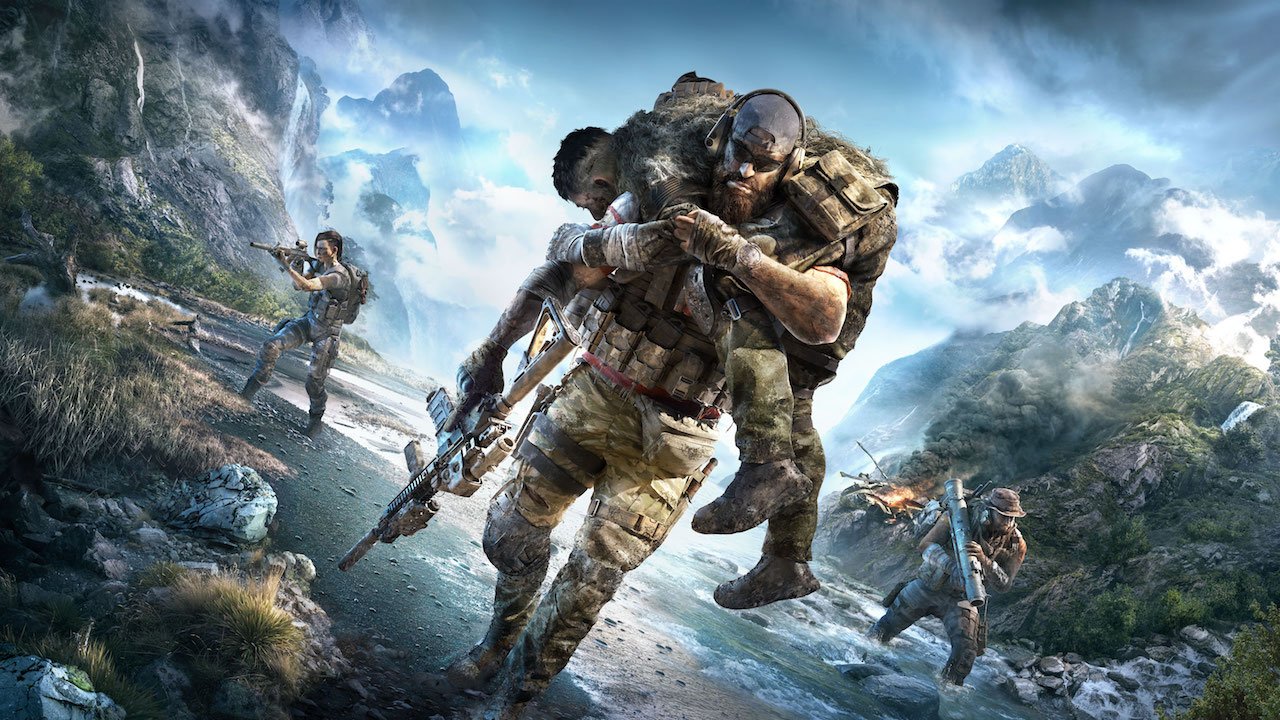Over the course of a few generations, and the years between them, Ubisoft’s tactical Ghost Recon series has gone through interesting changes and evolved. What began as a third-person stealth shooter has since become an open world sandbox title, in the vein of Mercenaries. Now, with the release of Tom Clancy’s Ghost Recon: Breakpoint, the franchise has changed again, although not as dramatically as before.
Whereas 2017’s Wildlands presented a marked change, Breakpoint isn’t as big of one, although that isn’t to say that it doesn’t feel surprisingly different. Although this sequel looks like its fantastic predecessor, and even carries quite a few mechanics over, it is its own beast. Unfortunately, that isn’t a great thing.
Tom Clancy’s Ghost Recon: Breakpoint continues our user created Nomad’s story, by sending him or her to a brand new, but similar location. That is, Auroa; a mostly jungle covered island, where one of technology’s brightest and most industrious has set up shop in order to make world leading advancements. The result is Skell Technology, which has turned part of the massive plot of water bordered land into a futuristic hub, with sparkling modern buildings, perfect looking highways and plenty of drones. Military police drones, security drones, farming drones, etc.
Much of the island of Auroa remains wild, though, meaning that you shouldn’t read the above and expect a vastly different open world. Breakpoint still retains that aspect of Wildlands, along with its visual identity and the driving mechanics, which have somehow gotten worse over the last two years. The same is true of its gunplay, which remains mostly similar, although the default aiming view is first-person. What’s different is the focus on survival, which makes this feel like a different, albeit notably worse, game.
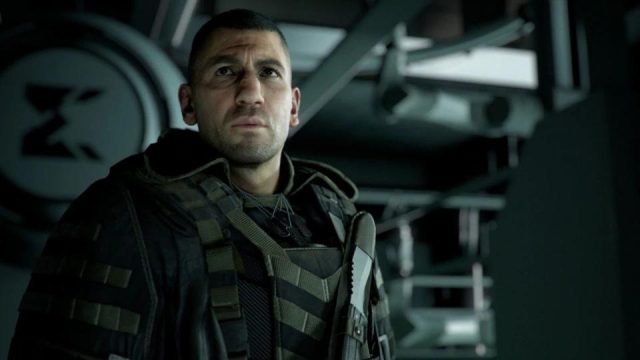
Things begin with Nomad’s team approaching Auroa by helicopter. They’re there to investigate why the island has gone dark and cut itself off from the rest of the world. Shit hits the fan very quickly, too, because the group’s airborne carriers are shot out of the sky as soon as they enter its airspace. Nomad survives, but it doesn’t seem like many have, if any at all. The player takes control when he (or she) awakens, and must explore the wreckage afterwards, while avoiding enemy contact as much as possible.
As the trailers have shown, a team of Wolves has taken up residence on Auroa, and they’re your main enemy here. Led by Lieutenant Colonel Cole D. Walker (aka. actor Jon Bernthal, from TV’s The Walking Dead and Netflix’s Punisher), they’re a heavily armored group of badasses, who aim to control their new home. Your goal is to put an end to this military uprising, by helping the local people, most of whom moved to the island to work for Skell. This involves undertaking story missions, completing timed faction missions for groups like the Outsiders, and gaining intel regarding the whereabouts of Walker’s base.
Although things look and, in quite a few ways, play like they did two years ago, Ghost Recon: Breakpoint is much more of a tactical survival game than its predecessor. The problem is that it doesn’t go far enough with this, and tries to ineffectively straddle the line between arcade and realism. On one hand, this thing wants you to be completely stealthy. Meanwhile, it places drones, planes and helicopters all over the place, and features such an abundance of enemies (as well) that it’s difficult to remain undetected a lot of the time. When you alert anything to your presence, things can also get quite nuts, in a way that makes it pretty obvious that the developers thought co-op first. That’s also strange, even though the industry is unfortunately (said as a single player first kind of guy) trending that way. Why is that? Well, the developers have stripped us of our few A.I. controlled teammates, and made it a very solo and isolated experience outside of online co-op.
Speaking of online, they’ve also made this a connected campaign. What does that mean? It means that you’re screwed if you don’t have an Internet connection. This thing connects to Ubisoft’s servers right at the main menu, and requires a connection for single player as well as any sort of multiplayer.
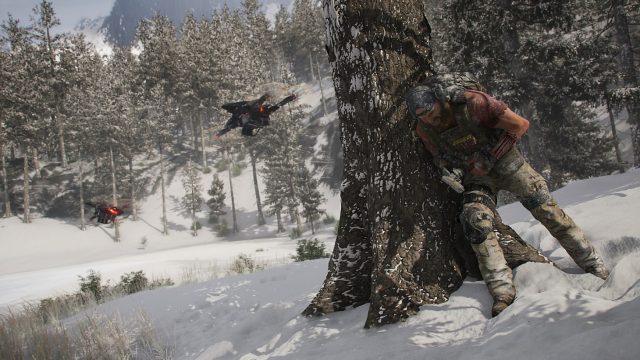
Whereas Wildlands was a very fun game that allowed you to play as you wanted, Breakpoint tries to emphasize stealth in a much more heavy handed fashion. As such, the developers have added a whole bunch of new survival elements, including a stamina meter that can become shorter over time and must be reset by drinking water, which can — at least at first — only be refilled from perfectly clean sources. There are also different types of rations, all of which add boosts to organic skills, as well as injuries that need to be healed using bandages or needles. These injuries can occur naturally, but also arise from being shot, although how this occurs happens to be wildly inconsistent. I was able to get shot lots of times and still run like normal. Then, at other times, I’d get hit with a few bullets and would end up limping.
The injury system is also pretty bland and basic, and is mostly represented through limping and sluggish movement. Truth be told, it’s more annoying than anything. As such, you can expect to get frustrated when, after hiding behind a rock to slowly bandage yourself up and heal all injuries, you’ll get shot midway through and die anyways. There’s a button prompt to cancel the healing practice, but it’s both sluggish and sometimes unresponsive, so don’t count on it.
Instead of hideouts, there are also a decent amount of bivouac locations, and they’re spread out over the massive island. You can find them organically, or by selecting information about them during intel opportunities, by which I mean the times you come across a document and get to choose between finding out about a weapon, a weapon attachment or a bivouac’s location. I believe there’s an achievement and trophy for finding 50 of them, so there must be quite a few.
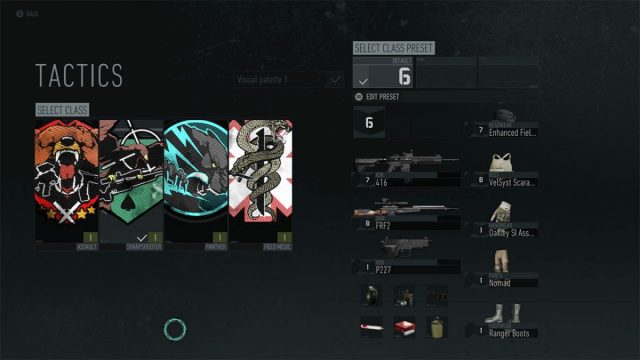
At bivouacs, Nomad can rest (read: camp), eat (for different bonuses, like lowered stamina withdrawal or lessened chance of injury), change classes, craft supplies (stimpacks, grenades), equip different items, call for a vehicle or helicopter and purchase things through a hefty amount of microtransactions. Yes, this game has lots of those. Buying 12000 Ghost Coins will set you back a whopping $106.99 Canadian, which is simply disgusting. Sure, these are completely optional purchases (and something I personally avoid in all instances), but that doesn’t mean they’re not gross or a step too far. Granted, Breakpoint is not the first game to implement them, and it surely won’t be the last.
Another big part of this game is the class system, which makes it so that you really need to think about which perks you select upon earning enough experience points. These classes include the field medic, sharpshooter, assault and panther options; all of which offer something different in terms of a special ability. All of them also have their own perks, and the game makes it so that you can only equip a certain amount of them. Furthermore, the perks you equip must be from the class you’ve selected, even though that isn’t originally made clear, nor is the perk system set up to make things easy to identify. It’s all pretty annoying, not to mention confusing (at least at first).
Ghost Recon: Breakpoint‘s class system is so heavy handed that, although it allows you to change things up almost whenever you’d like to, each class preset levels up independently. This means that, while you may have gear rated at level 20 in the sharpshooter class, your field medic preset may only be at level four. Then again, people generally tend to stick with one particular class — at least in my experience.
Gear plays a relatively big role here, too, because Breakpoint has taken the form of a loot shooter in a lot of ways. Sure, it’s not Borderlands or anything as extreme as Diablo or Torchlight in terms of loot, but there’s still quite a bit of it. The emphasis is on finding better gear in crates, or from downed enemies, or by undertaking quests that allow you to find weapons and weapon blueprints. Of course, you can also buy better things in the in-game shop, and can waste (or spend, if you prefer) real world money on microtransactions that help with such things.
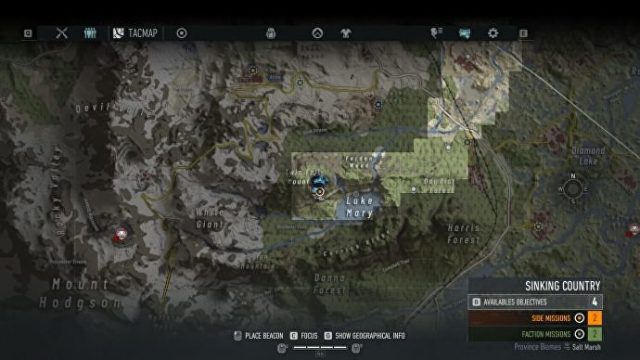
The above means lots of trips to the character menu, where you’ll be able to equip lots of new guns, gloves, boots, bulletproof vests, hats or helmets, all of which offer different levels of protection. If something is better than what you already have equipped it will show that with a green dash beside its icon. It is, however, possible to override things so that you can select the most aesthetically pleasing items and still get the benefits of anything that is better.
Like before, one also gets to create and customize his or her own character, from both male and female options. As I did in the last game, I went with a female avatar for something different, and was disappointed to find that the options were somewhat limited. I was also puzzled by the fact that I couldn’t seem to change her hair colour after selecting one from the start, because Wildlands allowed you to do that at any time. Breakpoint seems more interested in its gear loot and weapons, as well as tempting the player to buy different coloured t-shirts, backpacks and the like. Hell, you can even purchase different character faces and scars.
All of this combines to create a rather overwhelming experience, which isn’t all that player friendly. This is added to by a massive map that isn’t as easy to read or navigate as it could’ve been (and was before), as well as slow traversal. It feels like it takes forever to get from one point to another, especially when mission objectives can be twenty plus kilometers away. Sure, you can find and sometimes call helicopters, but they’re slow and aren’t always readily available. Vehicles are also seldom seen, outside of enemy flyover patrols, which can highlight your location and call alarm at almost any time. There’s also the fact that the driving sucks, and the other fact that most of the island is covered in water and woodlands.
Most of my time with this game has been spent slowly making my way from one point of the map to another, because fast travel isn’t an option unless you have seen, visited or found intel on nearby bivouac locations. It’s slow, plodding work.
The campaign is split into several acts, and has lots of timed faction missions to undertake, most of which require you to talk to an NPC before you can undertake them. They may involve hijacking a shipment of weapons, saving people who are stuck out in the country, or gathering information. On top of this, there are also side missions, weapon blueprint missions, weapon attachment missions, and more traditional side missions. The missions tab (which is found among many other menus) displays things in a webbed sort of pattern, but it’s not very player friendly. There’s different stories, cases, factions and objectives all over the page, and it’s hard to know what to take on next. Furthermore, the game emphasizes intel, and requires you to look at pictures, documents and the like, in order to ‘piece together’ the whereabouts of important NPCs or other case details. It’s a very basic and uninspired system, which is more of a nuisance than anything, because you have to actually notice a prompt that tells you to look at your intel.
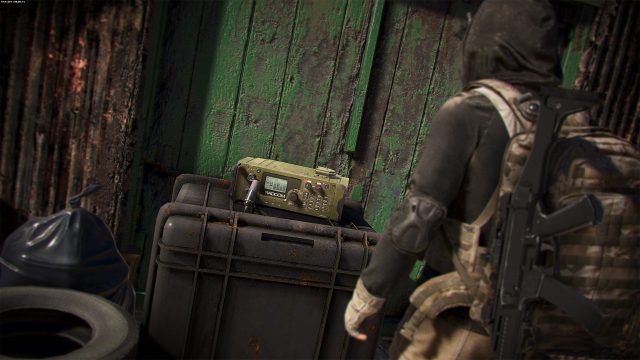
Said prompts are often hidden in the mission menu, or in one of your on-screen pins. What are these pins? Basically just mission identifiers. They take up a rather large portion of the top left part of the screen, and show the names and objectives for certain quests. I say certain, because you can only select up to three at a time. The ones you pick are then shown as coloured dots, with their distance shown in kilometers underneath, whenever you look in their direction while playing. The map doesn’t really make them all that clear, and is so cluttered with other coloured indicators that it’s not all that helpful or enjoyable to use.
The pins system is helpful, but it’s also a pain in the ass in some ways. It clutters the screen so much, and cannot always be hidden without getting rid of your minimap, which is located in the bottom right corner of the screen. At all times, a d-pad sits in the very top of the screen, but is over to the left so as to not be as annoying as it possibly could’ve been. All it does it show that you can press down on the d-pad to hide the pins, which becomes pretty clear after the first couple of times you see it. However, sometimes (hell, most of the time) pressing down on the d-pad gets rid of BOTH your pins and your minimap. At other times, it only gets rid of the pins. This annoyed me a lot, because I wanted the map to be there at all times. I did not want the large list of pins to clutter the screen at all times. It was distracting and a nuisance.
Needless to say, there’s a lot of busy micromanaging that doesn’t make the game more fun. In fact, it makes it less enjoyable than Wildlands, which — after it grew on me — became something I thoroughly enjoyed. I started it immediately after finishing Horizon: Zero Dawn, and was at first taken back by the muddy looking night visuals and the mediocre driving mechanics, but it ended up becoming a favourite. I actually just recently completed the DLC, and uninstalled it to free up space.
The gameplay also doesn’t take a step forward. It’s competent, and is mostly similar to the last game, but feels more cumbersome. The controls don’t feel as precise, the prompts don’t feel as quick to react, and the close combat kills aren’t as immediate as they should be, although they are pretty visceral. The player also has lots at his or her disposal, like drones and different types of grenades. It’s just not all that fun, especially when it’s so easy to get overwhelmed in single player.
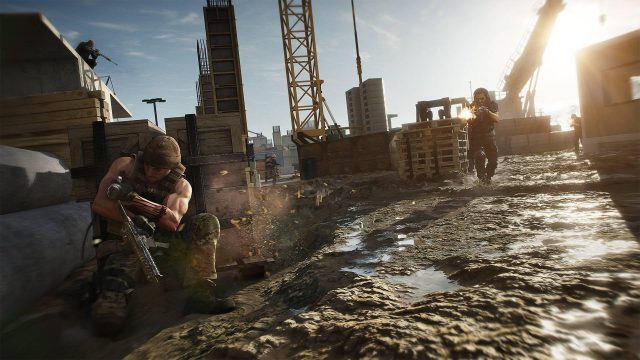
Ghost Recon: Breakpoint also carries forth the Ghost War PVP mode that was eventually added into Wildlands by way of a free update. Through it, players can take on other humans in team-based multiplayer. However, unlike Advanced Warfighter and Advanced Warfighter 2, the multiplayer feels dated, is disappointing and is poor. It’s clunky, glitchy, and basic. I did not enjoy my time with it, and don’t have much interest in going back.
Hell, I’ve been wondering if I even want to continue with the core campaign, which I wasn’t expecting to happen after liking Wildlands so much. This is where I admit that, because this game is so big, I haven’t yet finished its campaign. I’ve played for quite a few hours, but so much of it has been taken up by running (and sometimes driving) from one end of the island to another, between mission prompts that are kilometers from each other. It feels as if getting from one point to another takes longer this time around than ever before.
The story hasn’t intrigued me enough to want to progress, but I’m a completionist at heart and will surely do so. I don’t like leaving games unfinished, and although I try to finish every game I play before reviewing them, it’s sometimes difficult.
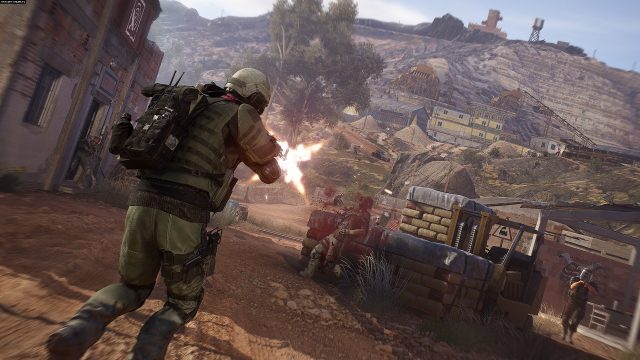
I should also make this review longer by mentioning that Ubisoft has tried to make this feel like a connected experience, in the way that Destiny and Destiny 2 do. The result is a social hub, which takes the form of a massive cave, where survivors have hidden and created a community. There, you can talk to important NPCs, undertake main, side and faction missions, camp, turn in weapon blueprints, purchase new gear, and enter into raids, which are coming later on.
On the presentation front, Ghost Recon: Breakpoint is fine. At times it’s a looker, but a lot of the time it looks as dated as it sometimes feels. Not to mention rushed, as if it should have been in the oven a bit longer. Then again, it is an open world game, with a massive map, even though a lot of it is desolate. There’s also more going on, with wildlife to hunt (for use in crafting), and plants to collect for the same reason. Not that that should make a huge difference.
For the most part, things run fine without any major issues. There are odd glitches to be seen, and somewhat long loading times. The map is also more desolate and boring than I would’ve hoped. Things also go offline for maintenance on occasion (two times so far, during my experience), kicking everyone out of both single player and any form of multiplayer.
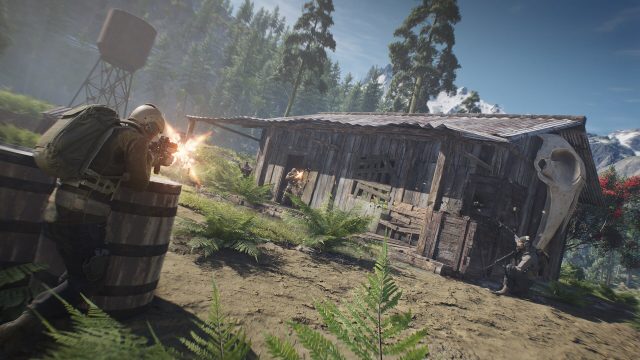
The audio is also fine, but unspectacular. There’s solid voice acting, but it’s nothing special. The sound effects are also fitting and solid, but won’t set the world on fire.
As far as the writing goes, you can expect things to be hit and miss. The dialogue is alright, but it’s not all that memorable or special in any way. The NPC enemies do talk more than they used to, though, and will sometimes have interesting conversations before you shoot them. Funnily enough, though, despite me picking a female character I was referred to as ‘him’ during at least one cutscene so far. Enemies have also used him more often than her, but this has gotten better as of late.
At the end of the day, I can’t help but be very disappointed in Tom Clancy’s Ghost Recon: Breakpoint. After how great Wildlands was, this is a major downgrade, although it shouldn’t have been as much of one. Not only does this thing suffer from an identity crisis — not knowing whether it wants to be tactical or more arcade, and struggling to find a balance between the two — but it’s also rushed feeling and unspectacular in every way. I never expected to be so bored or disappointed by a Ghost Recon game, but that’s unfortunately the case. In comparison to the great games that were Advanced Warfighter, Advanced Warfighter 2, Future Soldier (which had a great campaign and half decent multiplayer) and Wildlands, this is by far the worst entry in the series in years.
This review is based on the Xbox One X version of the game, which we were provided with.

